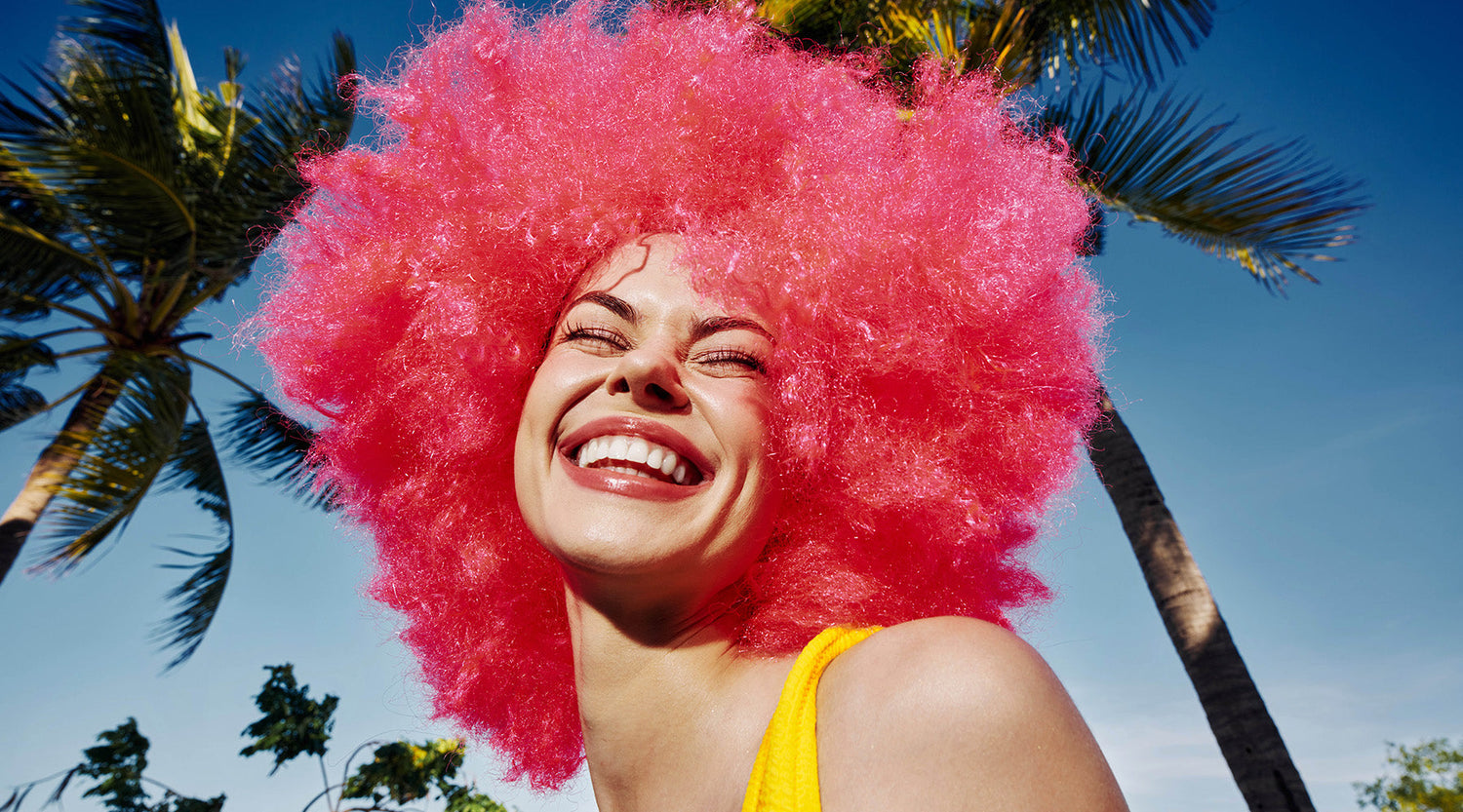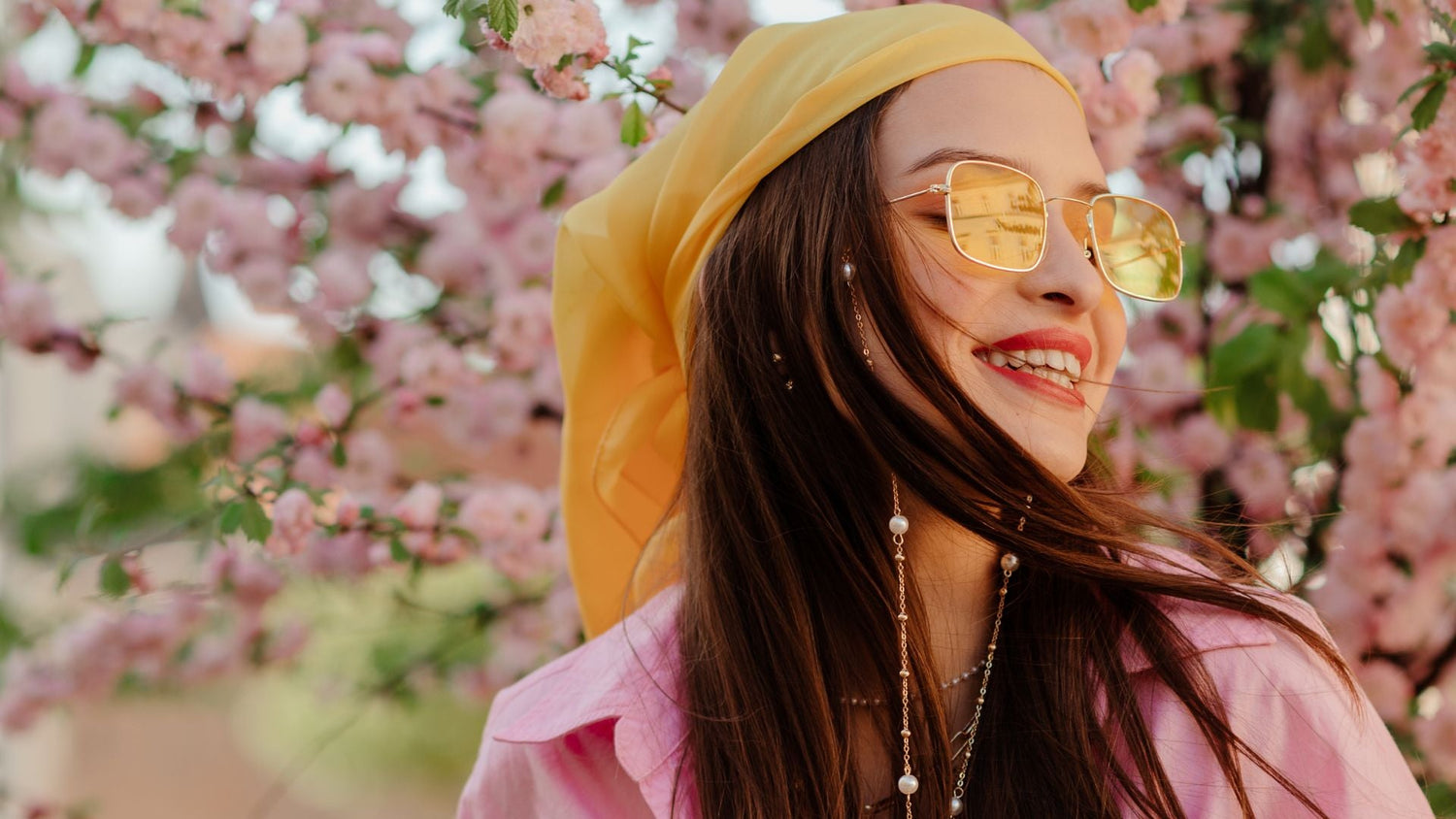Many companies and hair care products claim to offer solutions and treatments for male pattern baldness. But what about women who suffer from hair loss? Surprisingly, women are just as likely to experience this problem as men. Female hair loss tends to be less obvious than male hair loss, as it starts from the part line rather than receding from the front of the hair. But it's more common than you might think. Approximately one-third of women experience hair loss (alopecia) at some time in their lives, and as many as two-thirds of postmenopausal women suffer hair thinning or bald spots.
If you’re experiencing female pattern hair loss, or noticing that you’re thinning on top, you’re not alone! The million-dollar question is, can you fix it? The unfortunate truth is that no hair care product out there will reverse your hair loss, no matter what the label says on the shampoo, conditioner, or serum. What you can do, however, is protect, strengthen, and give volume to the hair you have. These useful tips will help prevent hair loss and keep your locks looking thicker and fuller than ever.
Types of Hair Loss in Women

Female pattern baldness is the most common type of hair loss in women. Known as androgenetic alopecia, this is the most common type of alopecia. It often follows a pattern of thinning along the crown and scalp, and is characterized by the progressive replacement of normal hair growth with smaller, vellus hair follicles (aka peach fuzz). Androgenetic alopecia affects both men and women, but unlike men, women with this condition rarely experience complete hair loss.
Alopecia areata is another type of hair loss in which your body attacks the roots of your hair follicles, where hair growth occurs. This can cause you to lose hair anywhere on your body, and can also lead to patchy hair loss. About 70% of patients recover their hair within two years.
Women who suffer from telogen effluvium have undergone a traumatic event like child birth, major surgery, or extreme stress, all of which can impact your hair. This can occur as much as several months after the trauma, and can cause women to lose fistfuls of hair at a time.
Then there's anagen effluvium, a form of hair loss that's commonly associated with chemotherapy. One characteristic of anagen effluvium is the tapered fracture of the hair shaft. Chemotherapy can cause you to lose around 90% or more of hairs in the anagen phase, or growth phase, of your hair.
Finally, there's traction alopecia, and any of you who have (or have had) braids, cornrows, or tight ponytails may have experienced it. This form of hair loss is caused by localized trauma to the hair follicles from hairstyles that pull at the hair over time.
Main Causes of Hair Loss in Women

It’s normal for humans to shed some hair or experience thinning hair. In fact, we lose around 50-100 hairs every day. This is part of the body’s natural renewal cycle. Fortunately, 90% of your hair is actually growing at all times to keep the cycle going, which isn’t bad considering that your hair is actually dead. However, when we start to lose more hair than we grow, it begins to thin on top, and bald patches can occur. Here are the main causes of hair loss in women:
Hair Today, Gone Tomorrow
From recovery time after working out to hair growth, it’s an unfortunate fact of life that aging slows everything down. In women, menopause can cause hair follicles to shrink, slow down hair growth, and sometimes even lead to hair falling out more easily thanks to a decrease in estrogen and progesterone levels. It's important to begin your hair care routine as early as possible to give your hair a fighting chance of staying fuller for longer. Need an ally in that fight? Lu's looking out for your hair with Impossible Keratin™️, a proprietary vegan keratin formulation that strengthens every hair strand three times more than other products. Every shampoo, conditioner, and styling cream you'll find at Lu is made with Impossible Keratin, the secret weapon you never knew you needed to strengthen and repair all hair types!
It’s “Hair-editary”
Family history is the most common cause of female-pattern hair loss. If your parents or grandparents suffered from hair loss, it’s much more likely that you will as you age.
Medical Conditions and Stress
Sadly, medicine that helps us with illness can cause hair loss as a side effect. This is often due to slowing down the anagen phase, or hair growth phase, or increasing androgens that cause alopecia. Similarly, a stressful event can push our hair into the resting phase for longer than we are used to. Fortunately, hair loss from medications and stress is usually temporary and may return to normal when the medication is no longer needed. Even COVID-19 can cause your hair to shed!
Diet and Nutrition
Let’s be real: eating more carrots won’t reverse hair loss, but diet, nutrition, and vitamins do play a role in hair follicle growth. And a diet that is lacking in key nutrients can certainly contribute to hair loss. Just as the right foods contribute to muscle growth, heart health and overall well-being, a healthy diet can help your hair retain its strength.
Hot Treatments
Perms and hot oil treatments that are said to nourish dry and frizzy hair are a common cause of hair loss, too. Ditch the damaging treatments for Lu’s Control Collection, which helps control frizz without the risk of hair loss. Just apply, style, and carry on conquering your day.
Tips For Preventing Hair Loss

It’s a sad fact of life that hair loss happens, and there is no cure for it. There are no shampoos, conditioners, or treatments that can reverse the effects of hair loss, but they can stimulate hair growth and health. Minoxidil (Rogaine), is the most well-known hair loss treatment for men and women. When applied directly to the scalp, it has been found to promote hair growth. Here are a few additional tips to keep your hair healthy.
- Make sure you’re getting enough protein. Hair is 95% made up of a protein called keratin. If you’re not getting enough protein in your diet, this can affect the keratin levels in your hair and lead to hair loss. Another way of getting enough keratin is by using Lu products, all of which contain Impossible Keratin™️.
- Switch your diet and take a multivitamin. Mediterranean diets, which are rich in fresh herbs and vegetables, have been shown to decrease hair loss in males, and could produce similar results for women. Multivitamins that contain vitamin A, B, C, D, E, biotin, and zinc also aid hair growth.
- Zen and the art of hair growth? You bet! If stress is causing your hair to fall out, then joining a yoga class or taking time out to devote to mindfulness exercises can lead to lower stress levels, which will help your hair fight back.
- Commit to a strict haircare routine. Lu uses plant-derived ingredients that work with your hair rather than against it. If you commit to a regular routine using products that are kind to your hair, you’ll have the best chance of fighting hair loss and strengthening your locks.
How Lu Can Help

Hair growth occurs in three stages. The anagen phase is when your hair begins to grow from the root. The catagen phase is when hair growth slows down and follicles shrink. And finally, the telogen phase occurs when old hair falls out and new hair begins to grow from the same hair follicle. Lu products are formulated to actually prolong the anagen phase, giving you healthy hair for longer. If you’re dealing with thinning hair, you’ll be thrilled to know that Lu is designed to give you thicker, fuller-looking hair.
Lu’s Freedom Collection makes hair appear fuller and plumps up the volume of fine hair. It’s a must-try if you regularly use ponytails to mask the effect of hair loss, which pulls at your hair and can increase hair loss. Give your locks a dose of Freedom and let them loose! And if you need to repair damaged hair, try LU’s Rescue Collection. By focusing on the root cause of hair damage from chemical dyes and straightening treatments, heat irons and the environment, this collection focuses on recovering your hair and helping to combat hair loss.





